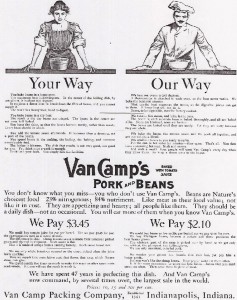I recently ran an Adwords split-test where the only difference in the ads was the 2nd line of text:
Ad #1: “40 years experience. Call today”
Ad #2: “39 years experience. Call today”
The first ad got a 2.50% click rate. The second was clicked on 4.42% of the time.
Changing 40 to 39 increased the click rate by 76.8% – even though, logically, 40 years is better than 39.
Why the difference?
For an explanation, we should turn to Claude Hopkins, often described as the greatest copywriter that ever lived. In his book, Scientific Advertising (1923), Hopkins wrote:
“Platitudes and generalities roll off the human understanding like water from a duck. They leave no impression whatever. To say, “Best in the world,” “Lowest price in existence,” etc. are at best simply claiming the expected. But superlatives of that sort are usually damaging. They suggest looseness of expression, a tendency to exaggerate, a careless truth. They lead readers to discount all the statements that you make.
People recognize a certain license in selling talk as they do poetry. A man may say, “Supreme in quality” without seeming a liar, though one may know that the other brands are equally as good. One expects a salesman to put his best foot forward and excuses some exaggeration born of enthusiasm. But just for that reason general statements count for little. And a man inclined to superlatives must expect that his every statement will be taken with some caution.
But a man who makes a specific claim is either telling the truth or a lie. People do not expect an advertiser to lie. They know that he can’t lie in the best mediums. The growing respect in advertising has largely come through a growing regard for its truth.
So a definite statement is usually accepted. Actual figures are not generally discounted. Specific facts, when stated, have their full weight and effect.”
(My emphasis. See http://www.scientific-advertising.co.uk/ch07-being-specific/being-specific-in-advertising-claude-hopkins/)
Specifics In Action
Let’s see how Hopkins used this principle in one of his ads:
There are a number of things I want to draw your attention to:
#1 (Bottom right):
“We could buy beans as low as 30c per bushel, yet we pay $2.10 for ours.”
A typical advertiser would say, “High quality beans”. That’s vague and could be an exaggeration.
Hopkins, instead, gives a fact. As he pointed out, specific statements like these are facts or lies. So it’s more believable.
#2 (Bottom right):
“We buy Michigan beans, because a certain soil there produces the best beans grown.
The choicest part of the crop is picked over by hand. so we only get the whitest, the plumpest, the fullest grown
Here Hopkins explains the method for selecting better beans.In copywriting, this is often referred to as “describing the mechanism”. You want people to believe your product or service is different? Then describe what you do that’s different.
(BTW, he’s also painting a picture of what sort of beans are used.)
#3 (Bottom right):
“No wonder your grocer has brands that cost him less, yet pay him a better profit.
This isn’t a specific, but it’s worth pointing out: Here Hopkins is giving the reader the idea that cheaper brands have a larger markup – and, therefore, are poorer value.
#4 (Bottom centre):
“We have spent 47 years perfecting this dish.
47 years works better than 50 years – the same way 39 worked better than 40 in my PPC ad. You believe “47 years”. “50 years” is almost certainly not true.
How To Use This
Look through your sales materials – whether it’s your ads, brochures, web pages – and pick out any general or unspeficied claim you make (e.g. better, faster, cheaper, longer-lasting) – is there a way to make it more precise?
If so, try changing it – or, better yet, split-testing it – to see if a more specific claim can boost your sales.
Steve Gibson


